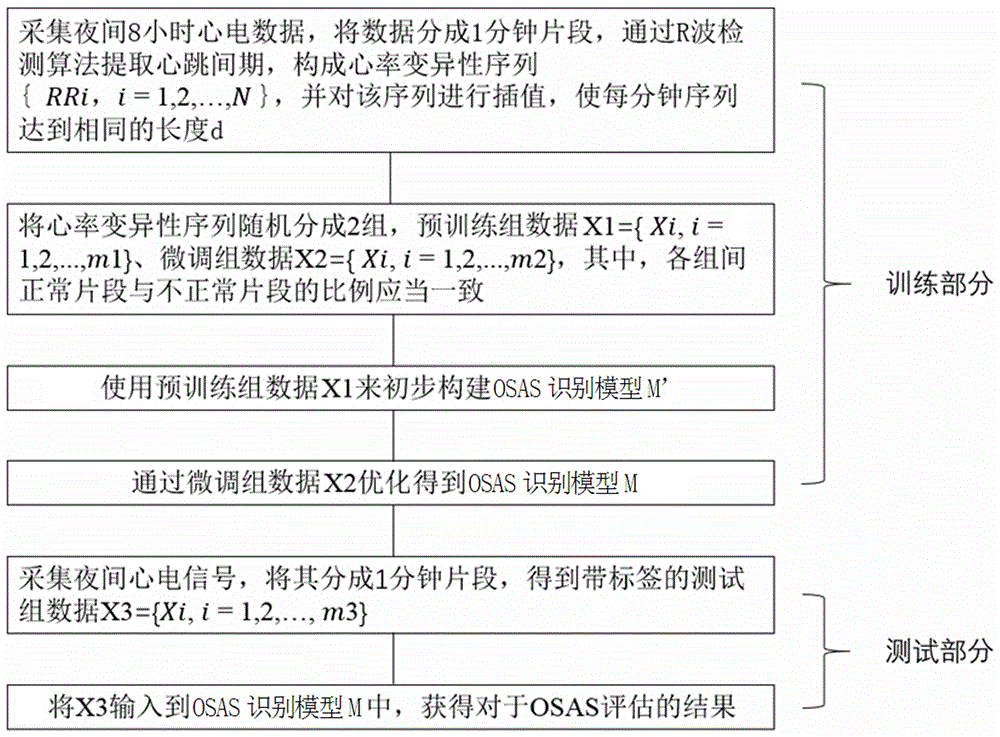Sleep apnea syndrome assessment method based on electrocardiogram signals
A technology of sleep apnea and electrocardiogram, which is applied in the field of biomedical engineering, can solve the problems of manpower and cost, difficult to implement, and large patient interference, so as to reduce the need for professional knowledge, excellent identification ability, and easy implementation. Effect
- Summary
- Abstract
- Description
- Claims
- Application Information
AI Technical Summary
Problems solved by technology
Method used
Image
Examples
Embodiment Construction
[0037] The present invention uses the subject's ECG signal data collected at night to train a sparse autoencoder model (d-L1-L2-2) with two hidden layers, the first layer is the input layer, and the middle two layers are hidden layers , and finally the output layer, normal segment or abnormal segment), the technical solutions in the examples of the present invention are clearly and completely described below in conjunction with the accompanying drawings. Obviously, the described examples are only part of the implementation items of the present invention, rather than All instance items.
[0038] see figure 1 , you can see the system block diagram of the present invention.
[0039] figure 2It is the implementation flowchart of the example of the present invention.
[0040] The specific steps of the training process:
[0041] Step 1, training sample data preparation
[0042] 1.1 Collect the subject's nighttime ECG signal, divide it into 1-minute segments, and mark whether t...
PUM
 Login to View More
Login to View More Abstract
Description
Claims
Application Information
 Login to View More
Login to View More - R&D
- Intellectual Property
- Life Sciences
- Materials
- Tech Scout
- Unparalleled Data Quality
- Higher Quality Content
- 60% Fewer Hallucinations
Browse by: Latest US Patents, China's latest patents, Technical Efficacy Thesaurus, Application Domain, Technology Topic, Popular Technical Reports.
© 2025 PatSnap. All rights reserved.Legal|Privacy policy|Modern Slavery Act Transparency Statement|Sitemap|About US| Contact US: help@patsnap.com



